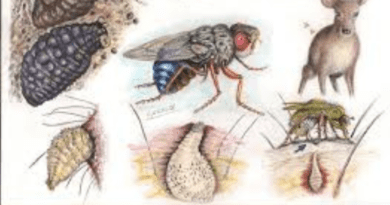When To Stop Using Gauze After Tooth Extraction? A Comprehensive Guide
If you’ve recently undergone a tooth extraction, you’re probably wondering when it’s safe to stop using gauze. The healing process after a tooth extraction is crucial, and knowing when to discontinue gauze use is essential for a smooth recovery. This comprehensive guide will explore the factors influencing when to stop using gauze, provide a step-by-step recovery plan, and answer common questions to ensure you have all the information you need for a successful recovery.
Understanding Tooth Extraction and Gauze Usage
Before diving into when to stop using gauze, let’s briefly discuss tooth extraction and why gauze plays a vital role in the process.
Tooth Extraction: Tooth extraction is a dental procedure in which a tooth is removed from its socket in the jawbone. It is often performed due to severe tooth decay, infection, crowding, or as part of orthodontic treatment.
Gauze Usage: A blood clot forms in the extraction site after a tooth extraction to facilitate the healing process. Gauze is used to control bleeding and protect the clot. It also helps in reducing swelling and discomfort.
When to Stop Using Gauze After Tooth Extraction
The timing for discontinuing gauze use after a tooth extraction depends on various factors, including extraction type, overall health, and how well you follow post-operative instructions. Here’s a general guideline:
1. Immediate Post-Extraction Period (First 24 Hours)
In the initial 24 hours following a tooth extraction, it’s crucial to keep the gauze in place as instructed by your dentist. Here’s how to do it:
- Step 1: Bite gently but firmly on the gauze pad provided by your dentist.
- Step 2: Maintain this pressure for 30 minutes to help the blood clot form.
- Step 3: If bleeding continues, replace the gauze pad and repeat the process.
- Step 4: Follow your dentist’s advice regarding changing the gauze.
During this period, avoid disturbing the extraction site. Do not rinse your mouth vigorously or touch the area with your tongue or fingers. The gauze should remain in place until bleeding significantly diminishes or stops.
2. Subsequent 24-48 Hours
After the first 24 hours, you can gradually reduce your reliance on gauze. Here’s what to keep in mind:
- Step 1: You can remove the gauze if bleeding has substantially decreased.
- Step 2: However, continue to avoid disturbing the clot, and refrain from drinking through a straw, spitting forcefully, or smoking, as these actions can dislodge the clot and lead to a painful condition known as dry socket.
In most cases, by the end of the second day, you should be able to discontinue gauze use altogether. If bleeding persists or worsens, contact your dentist promptly for further guidance.
3. Beyond 48 Hours
After the initial 48 hours, gauze usage is typically unnecessary. At this stage, focus on maintaining good oral hygiene and following your dentist’s post-operative care instructions, which may include:
- Gently rins your mouth with warm saltwater.
- Taking prescribed medications for pain and infection prevention.
- Eating soft, easy-to-chew foods to avoid irritation to the surgical site.
You must continue monitoring your healing progress and contact your dentist if you experience any unusual symptoms or complications.
FAQ: Common Questions About Gauze Usage After Tooth Extraction
1. Can I use any gauze for my tooth extraction?
Yes, using the sterile gauze provided by your dentist is recommended. It’s specifically designed for this purpose and ensures a clean and safe environment for healing.
2. How often should I change the gauze during the first 24 hours?
Follow your dentist’s instructions, but typically, gauze should be changed every 30 minutes or as directed until bleeding decreases.
3. Is it normal for some bleeding to continue after 24 hours?
Minimal oozing or spotting may be expected, but contact your dentist immediately if excessive bleeding worsens.
4. What should I do if I accidentally dislodge the blood clot?
If the blood clot is dislodged, it can lead to a dry socket. Contact your dentist for guidance and follow their instructions closely.
5. Can I drink through a straw or smoke after tooth extraction?
It’s best to avoid drinking through a straw and smoking for at least 72 hours after the procedure, as these actions can disrupt the healing process.
6. When can I resume my regular oral hygiene routine, including brushing and flossing?
You can resume gently brushing and flossing the day after your extraction, but be cautious around the surgical site.
7. What should I do if I experience severe pain after the extraction?
Contact your dentist if you experience severe or worsening pain, as it may be a sign of infection or complications.
8. How long does it take for the extraction site to heal fully?
The complete healing process can vary from person to person, but the extraction site generally takes several weeks to heal fully. Follow-up appointments with your dentist are essential to monitor your progress.
Knowing when to stop using gauze after a tooth extraction is essential for a successful recovery. Follow the guidelines provided by your dentist, maintain good oral hygiene, and be vigilant for any signs of complications. By taking these steps, you can ensure a smooth healing process and protect your oral health.
For more information on tooth extraction and post-operative care, visit the American Dental Association website.
Conclusion
In your journey toward optimal oral health, proper post-operative care is paramount. Knowing when to stop using gauze after a tooth extraction is just one piece of the puzzle. Remember to follow your dentist’s instructions diligently, maintain good oral hygiene, and prioritize your well-being.
A successful recovery ensures your comfort and sets the stage for a healthy, confident smile. Don’t hesitate to contact your dental professional if you have any concerns or questions during your recovery process. Your smile is worth it!
Disclaimer: This article is for informational purposes only and should not be considered professional medical or dental advice. Always consult your dentist or healthcare provider for personalized guidance on your situation.




